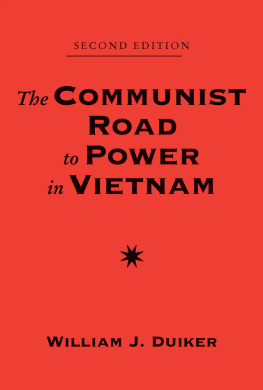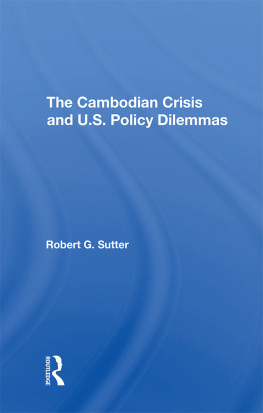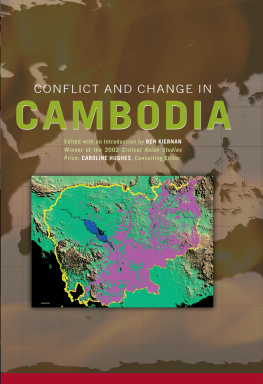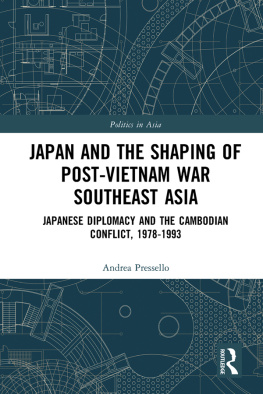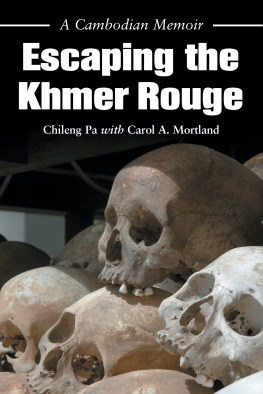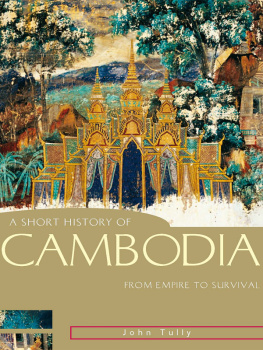More praise for How Pol Pot Came to Power
The leading historians of the period, Michael Vickery (Cambodia 19751982) and Ben Kiernan (How Pol Pot Came to Power), have both demonstrated the gradations and variations in hardship and terror.
Barbara Crossette, New York Times Book Review
This is the story of the rise of the most terrible revolutionary movement in history, the Khmer Rouge. It is a monumental piece of research, scrupulously documented and based mainly on original sources.
Chris Mullin, Tribune
Kiernans work on recent events in Cambodia is well-known and respected; the book should be read by those who wish to be informed.
Judith M. Jacob, British Book News
An immensely complex history, likely to be as nearly definitive an account as possible.Philip Windsor, The Listener
Valuable. Mr. Kiernan is a meticulous Australian scholar.Alexander MacLeod, BBC World Service
An invaluable source of information on Khmer communism.Bangkok Post
A book that will remain for a long time a standard reference.Economic Times (India)
A major tour de force.Review of the Asian Studies Association of Australia
The mass of evidence brought to bear makes the main lines of the argument convincing [and] gives a tremendous richness to the story.Journal of Contemporary Asia
Books and monographs by Ben Kiernan
The Samlaut Rebellion and its Aftermath, 196770
Peasants and Politics in Kampuchea, 19421981 (coauthor)
Cambodia: The Eastern Zone Massacres
Burchett: Reporting the Other Side of the World, 19391983 (editor)
Genocide and Democracy in Cambodia: The Khmer Rouge, the United Nations, and the International Community (editor)
The Pol Pot Regime: Race, Power and Genocide in Cambodia under the Khmer Rouge, 19751979
Le Gnocide au Cambodge, 19751979: race, idologie et pouvoir
Conflict and Change in Cambodia (editor)
The Specter of Genocide: Mass Murder in Historical Perspective (coeditor)
How Pol Pot Came to Power
How Pol Pot Came To Power
Colonialism, Nationalism, and Communism in Cambodia, 19301975
Second Edition
BEN KIERNAN

Second Edition published 2004 by Yale University Press. First published 1985 by Verso.
Copyright 1985 by Ben Kiernan
Preface to the Second Edition copyright 2004 by Ben Kiernan
All rights reserved.
This book may not be reproduced, in whole or in part, including illustrations, in any form (beyond that copying permitted by Sections 107 and 108 of the U.S. Copyright Law and except by reviewers for the public press), without written permission from the publishers.
Printed in the United States of America
Library of Congress Control Number: 2004106436
ISBN 978-0-300-10262-8 (pbk. : alk. paper)
A catalogue record for this book is available from the British Library.
The paper in this book meets the guidelines for permanence and durability of the Committee on Production Guidelines for Book Longevity of the Council on Library Resources.
10 9 8 7 6 5 4 3
for Joan and Peter
The Story of El Salvador
The Silence of Hiroshima
Destruction of Cambodia
Short memory, must have a short memory.
Midnight Oil, 10, 9, 8, 7, 6, 5, 4, 3, 2, 1
Contents
Preface to the Second Edition
Before World War Two, Cambodia was a highly taxed, relatively quiet corner of the French colonial empire. Eighty percent of its population comprised ethnic Khmer, Buddhist, rice-growing peasants. Ethnic and religious minorities made up nearly a fifth of its population. Vietnamese, Chinese, and Muslim Chams worked mostly in rubber plantations or as clerks, shopkeepers, and fisherfolk, and twenty other small ethnolinguistic groups lived in the hills and forests. This book charts the emergence within that traditional society of a Cambodian nationalist movement in the 1930s and 1940s, and the formation of a local communist party in 1951.
Cambodia won its independence from France in 1954. A decade later, a new, younger leadership took charge of the renamed Communist Party of Kampuchea (CPK) and launched an armed insurgency in 1967. The Vietnam War spilled over into Cambodia in 1970, and the CPK took power there five years later. How Pol Pot Came to Power, the first of two books on twentieth-century Cambodian history, takes the story up to the CPKs victory in 1975. The sequel, The Pol Pot Regime: Race, Power and Genocide in Cambodia under the Khmer Rouge, 19751979 (2d ed., Yale University Press, 2002), details the rule of the CPK, its crimes against humanity, and its assaults on domestic dissidents and neighboring states, leading to its overthrow by the Vietnamese army.
Colonialism and Nationalism
A French missionary wrote in 1751, The Cambodians have massacred all the Cochinchinese [Vietnamese] that they could find in the country. The Khmer king, the missionary reported, gave orders or permission to massacre all the Cochinchinese who could be found, and this order was executed very precisely and very cruelly; this massacre lasted a month and a half; only about twenty women and children were spared; no one knows the number of deaths, and it would be very difficult to find out, for the
This racial massacre was in part a response to southern Vietnamese expansion into Cochinchina, the Mekong Delta region, which Cambodians had ruled until the eighteenth century. Khmers still call it Lower Cambodia (Kampuchea Krom). In 1978, Pol Pots regime returned to this history in an anti-Vietnamese Black Book. In fact, Cochin is simply a French rendering of the Chinese term for Vietnam (Giao-chi). The suffix China distinguished it from Cochin in India.
Contrary to CPK revisionism, Khmer royal chronicles depict Vietnamese-Cambodian relations as being reasonably cordial as late as the seventeenth century. Ironically, this sense of omnipresent threat and precarious national survival, common among Cambodian nationalists, was fueled as much by twentieth-century expansion as by millennial decline.
The map of modern Cambodia was fully drawn only in the decade before World War One. In 1907, France obliged Thailand to return Cambodias entire northwest quadrant, now the provinces of Battambang, Siemreap, Oddar Meanchey, and Preah Vihear, which had been ruled from Bangkok since 1794. The French restored more territory to Cambodia in 1914, in an exchange with their other colony, Cochinchina.the northwest territories, including the medieval temples of Angkor, had a major impact on Cambodian elite nationalism. King Sisowath (r. 190427) welcomed their recovery with a prominent commemorative monument in Phnom Penh. (See map A below.)
Cambodian nationalist attention then focussed on other, longer-lost, Khmer-speaking areas: Surin and Buriram provinces of Thailand, whose ethnic Khmer majority still call themselves Upper Cambodians (khmaer loeu), and Vietnams Mekong Delta, with its khmaer krom minority. The gains of 190714 encouraged Cambodia in the 1940s to petition its French protector to return Kampuchea Krom from Vietnam. (See map B below.)
Restoration of the northwest provinces came only through French colonial power. Cambodia had little capacity to defend them from Thailand, which did not renounce its claim, maintaining ties with Khmers who had grown up there during a century of Thai rule. In World War Two, with Japanese support, Bangkok attacked and again seized northwest Cambodia. Thailand had to return the territories once again in 1946, but the lesson to Khmer nationalists was one of vulnerability. Territorial diminution became the nationalist nightmare.
Next page


